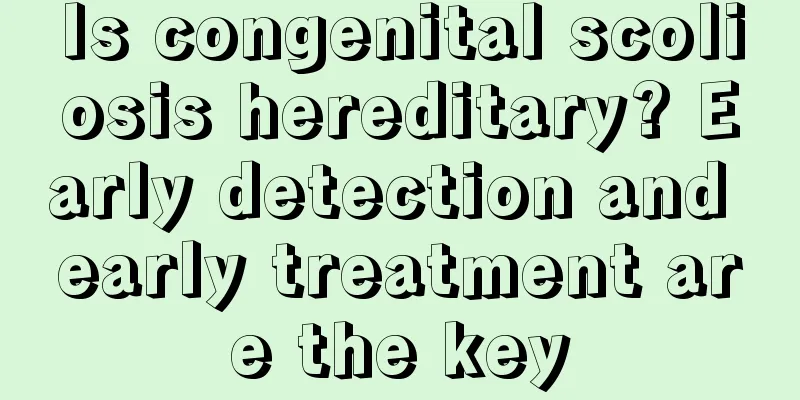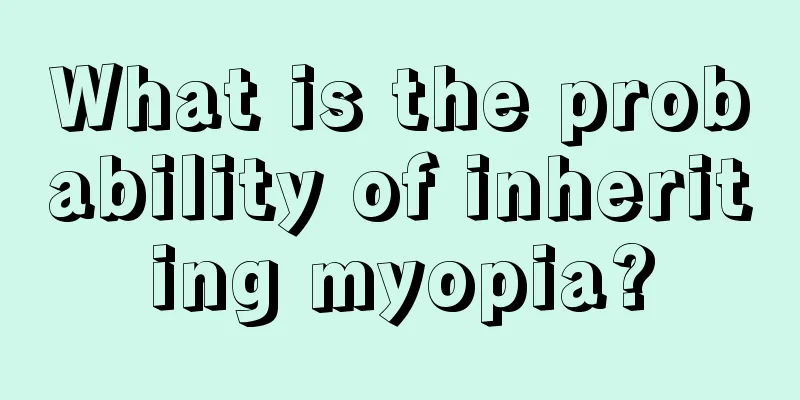Why is the black pupil of the eye not in the middle?

|
When the pupil is not in the center, it is generally called strabismus. There are many reasons for strabismus. However, if it is only a mild abnormality and there are no other eye lesions, surgery is generally not recommended. You can leave it alone for now. If you feel that it affects your appearance, it can actually be alleviated through correction. If the strabismus is more serious, it is best to go to the hospital for surgical treatment in time. Causes of strabismus 1. Congenital factors: 1. Abnormal development of the nerve nuclei and/or nerves that control eye movement. 2. Abnormal development or absence of extraocular muscles and fascia tissue. 3. Abnormal development of the face and orbits. 4. The baby may suffer brain and eye damage due to dystocia, intrauterine asphyxia, forceps delivery, etc. 5. Genetic factors. Second, acquired factors: 1. Children: accommodation factors (hyperopia), insufficient convergence or separation function, monocular poor vision (caused by amblyopia or eye disease), etc. 2. Adults: neurological diseases, endocrine abnormalities, ENT diseases, brain trauma, eye trauma, orbital space-occupying diseases, viral infections, neuritis, myositis, and abnormalities of the extraocular muscle fascia tissue. Symptoms of strabismus Severe or mild esotropia or exotropia will not cause eye discomfort. Only those with high inclination will cause eye discomfort. Vertical latent strabismus will cause more obvious eye discomfort, and rotational latent strabismus will cause obvious symptoms of eye and systemic discomfort. The symptoms of latent strabismus are also related to factors such as overall health and mental state. 1. Headaches, sore eyes, and photophobia often occur after looking for a long time. This is due to eye muscle fatigue caused by the continuous use of neuromuscular reserve power. 2. When reading, the handwriting is unclear, overlapping, or serial. Sometimes intermittent diplopia and intermittent strabismus may occur. If you read with one eye, it feels clearer and less laborious, and even binocular vision disorder may occur. 3. Poor stereoscopic perception, unable to accurately determine the position and distance of spatial objects. Hidden strabismus may also cause neurological radiation symptoms, such as nausea, vomiting, insomnia, conjunctival and eyelid congestion, etc. |
<<: What to do if eye pressure is high?
>>: What's the white area around my eyes?
Recommend
What to do if I can't hear
Consider the possibility of sudden deafness. Sudd...
Is lymphoma contagious?
Is lymphoma contagious? 1. Lymphoma is a malignan...
What medicine can cure concussion quickly?
Concussion is a neurological disease. Mild concus...
Can white hair turn black?
Whether the graying of hair is caused by some phy...
Tips for removing yellow stains from clothes
Yellow stains on clothes are a type of stain on c...
Nursing methods for testicular cancer
Most patients with testicular cancer have more or...
What's wrong with feeling tired
As people's life pressure increases and the p...
Can prostate cancer be cured
Prostate cancer is a disease that is very harmful...
Will Mongolian spots grow on the face?
Nowadays, many children have Mongolian spots on t...
Do you know how to make homemade vanilla ice cream?
Vanilla is a new type of health-care vegetable. I...
How to wash clothes stained with liquid foundation
Many people accidentally get foundation on their ...
External hemorrhoid surgery process
Patients with external hemorrhoids basically need...
Side effects of brewing tea in a sterling silver teapot
Many people believe that the silver content in st...
Is renal hamartoma surgery dangerous?
Renal hamartoma, also known as renal angiomyolipo...
Is lung infiltration lung cancer?
Pulmonary infiltration is a description of the re...









